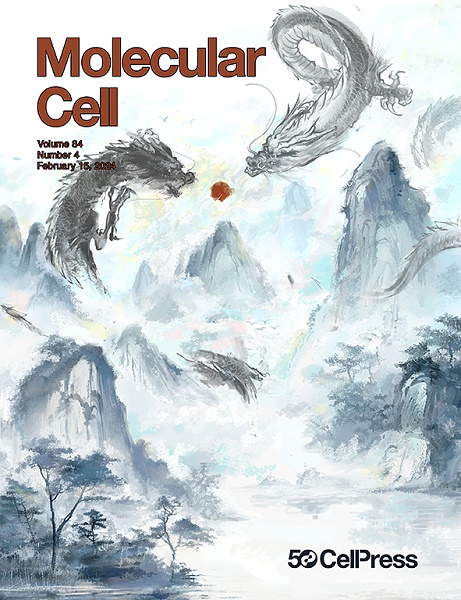Aberrant phase separation drives membranous organelle remodeling and tumorigenesis
IF 14.5
1区 生物学
Q1 BIOCHEMISTRY & MOLECULAR BIOLOGY
引用次数: 0
Abstract
Membrane remodeling is essential for numerous cellular functions. Although liquid-liquid phase separation (LLPS) of intrinsically disordered region (IDR)-rich proteins could drive dramatic membrane remodeling of artificial giant unilamellar vesicles, it remains elusive whether LLPS-mediated membrane-remodeling functions in live cells and what role it plays in specific bioprocesses. Here, we show that three IDR-rich integral transmembrane fusion proteins (MFPs), generated by chromosomal translocations, can lead to de novo remodeling of their located membranous organelles. Taking FUS-CREB3L2, prevalent in low-grade fibromyxoid sarcoma (LGFMS), as a proof of concept, we recorded super-resolution long-time imaging of endoplasmic reticulum (ER) remodeling dynamics as accumulating FUS-CREB3L2, meanwhile causing spontaneous ER stress to hijack the X-box-binding protein 1 (XBP1) pathway. We further reveal the underlying mechanisms of how FUS-CREB3L2 transduces its tumorigenic signals and aberrant LLPS effects from the ER membrane into the nucleus autonomously, which activates hundreds of LGFMS-specific genes de novo compared with CREB3L2, thus sufficiently reprogramming the cells into an LGFMS-like status.

异常相分离驱动膜细胞器重塑和肿瘤发生
膜重塑是许多细胞功能所必需的。虽然富含内在无序区(IDR)的蛋白的液-液相分离(LLPS)可以驱动人工巨型单层囊泡的膜重塑,但LLPS介导的膜重塑是否在活细胞中起作用以及在特定生物过程中起什么作用仍然是未知的。在这里,我们展示了三种富含idr的整体跨膜融合蛋白(mfp),由染色体易位产生,可导致其所在膜细胞器的重新重塑。以低级别纤维黏液样肉瘤(LGFMS)中普遍存在的FUS-CREB3L2为概念证明,我们记录了内质网(ER)重塑动力学的超分辨率长时间成像,记录了FUS-CREB3L2的积累,同时引起自发性内质网应激劫持x- box结合蛋白1 (XBP1)途径。我们进一步揭示了FUS-CREB3L2如何将其致瘤信号和异常的LLPS效应从内质网膜自主转导到细胞核的潜在机制,与CREB3L2相比,它重新激活了数百个lgfms特异性基因,从而充分地将细胞重新编程为lgfms样状态。
本文章由计算机程序翻译,如有差异,请以英文原文为准。
求助全文
约1分钟内获得全文
求助全文
来源期刊

Molecular Cell
生物-生化与分子生物学
CiteScore
26.00
自引率
3.80%
发文量
389
审稿时长
1 months
期刊介绍:
Molecular Cell is a companion to Cell, the leading journal of biology and the highest-impact journal in the world. Launched in December 1997 and published monthly. Molecular Cell is dedicated to publishing cutting-edge research in molecular biology, focusing on fundamental cellular processes. The journal encompasses a wide range of topics, including DNA replication, recombination, and repair; Chromatin biology and genome organization; Transcription; RNA processing and decay; Non-coding RNA function; Translation; Protein folding, modification, and quality control; Signal transduction pathways; Cell cycle and checkpoints; Cell death; Autophagy; Metabolism.
 求助内容:
求助内容: 应助结果提醒方式:
应助结果提醒方式:


